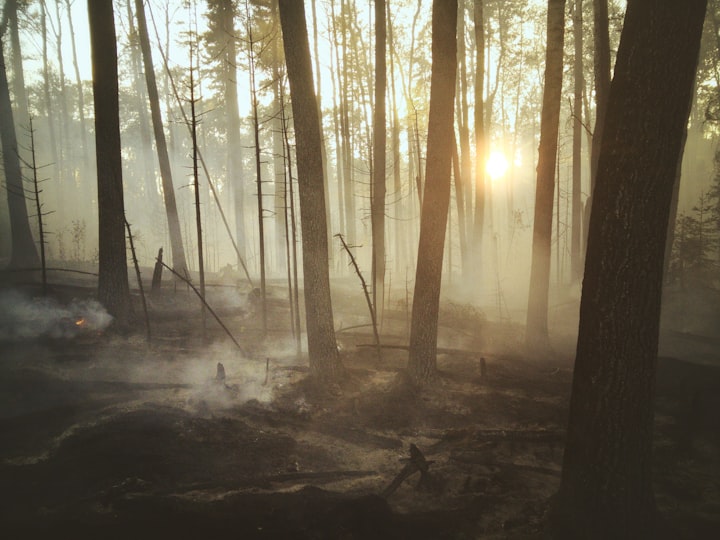The Struggle for Environmental Justice:
A Tale of Resilience and Hope

In the heart of a forgotten neighborhood, nestled amidst towering smokestacks and polluted rivers, a community united by their shared hardship stood resilient in the face of environmental injustice. This is the story of Greenwood Heights—a community that found their voice, fought for their rights, and transformed their struggle into a beacon of hope for marginalized communities everywhere.
Greenwood Heights was a predominantly low-income neighborhood, overlooked by both policymakers and prosperity. Its residents, mostly people of color, knew all too well the weight of breathing in air thickened by industrial emissions and witnessing the murky waters of the nearby river. In a cruel twist of fate, the same industries that brought jobs to the area also inflicted harm on its residents, disproportionately impacting their health and well-being.
At the heart of this tale is Rosa Ramirez, a determined woman who grew up in Greenwood Heights and was determined to change its trajectory. Rosa's childhood was marked by countless trips to the doctor for respiratory issues and allergies—a consequence of the polluted environment she lived in. As she grew older, her frustration with the lack of action grew alongside her determination to make a change.
One day, Rosa discovered a report that shed light on the stark reality facing her community. The report revealed staggering statistics—higher rates of asthma, cancer, and other illnesses among Greenwood Heights' residents compared to neighboring areas. Armed with this evidence, Rosa decided to take action.
She began by rallying her neighbors, hosting community meetings where people shared their stories of illness and adversity. Their collective anger and determination fueled the birth of the Greenwood Heights Environmental Justice Alliance. The alliance united people from all walks of life—teachers, parents, activists, and youth—who were united by a common goal: to fight for clean air, safe water, and a healthy environment for their families.
Rosa and her allies attended city council meetings, organized rallies, and collaborated with experts to bring attention to the plight of their community. They shared stories of children struggling to breathe, families burdened with medical bills, and the basic human right to live in a healthy environment. Their emotional testimonies resonated deeply, forging connections between different communities facing similar challenges.
The turning point came when they invited journalists to Greenwood Heights to witness the situation firsthand. The stories of those living amidst environmental injustice began to capture national attention, sparking empathy and outrage. Public pressure mounted on both the industries responsible and the city officials who had ignored their cries for too long.
The movement faced adversity, too. Rosa and her allies were met with skepticism, resistance, and even hostility from those who stood to lose profits if environmental regulations were tightened. But Rosa's determination was unbreakable, fueled by a promise she had made to herself and her community—a promise that no one should be denied the right to a healthy life simply because of where they lived.
As momentum grew, the alliance's efforts began to bear fruit. City officials started taking meetings, environmental studies were commissioned, and regulations were scrutinized. The persistent advocacy of Greenwood Heights' residents, fueled by their emotional stories, was slowly but surely making a difference.
In a pivotal moment, the city passed a groundbreaking ordinance that placed stricter emissions controls on industries located near residential areas. Greenwood Heights' victory was a testament to the power of grassroots movements, collective action, and the undeniable force of personal stories. The community had turned their pain into power, transforming themselves from victims into agents of change.
Years later, the air in Greenwood Heights was noticeably cleaner, and the river's waters ran clearer. The once-toxic environment that had caused so much suffering was finally on the path to recovery. Rosa Ramirez's efforts had not only transformed her community but had also ignited a larger conversation about environmental justice and the disproportionate burden borne by marginalized communities.
Greenwood Heights became a beacon of hope for other communities facing similar challenges. Rosa's story of resilience and the triumph of community-led action inspired others to stand up and fight for their rights to clean air, water, and a healthy environment. The emotional journey of this neighborhood illustrated that the fight for environmental justice is not just about regulations and policy—it's about dignity, humanity, and the belief that everyone deserves to live in a place where they can thrive without fear.
As the sun sets over Greenwood Heights, the wind now carries whispers of change. The legacy of Rosa Ramirez and her community lives on, a testament to the transformative power of unity, perseverance, and the emotional strength of those who dare to believe that justice is attainable, even in the face of seemingly insurmountable odds.
About the Creator
paul josiah
I make common sense





Comments
There are no comments for this story
Be the first to respond and start the conversation.